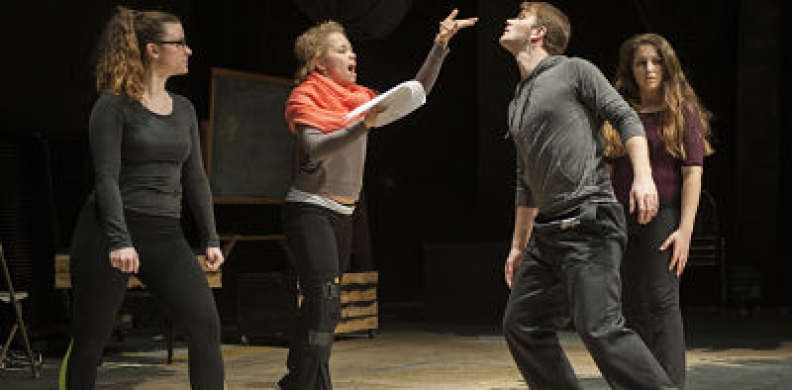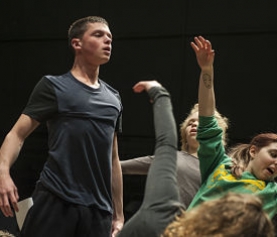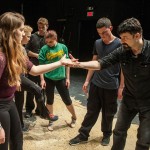
Finding the Truth in Translation
In the previous entry, we talked a little bit about the original text, and how it was treated in medieval England. Well, this was well and good for medieval Europeans, but why adapt these plays (either in whole or in part) for a modern audience? After all, what may have made sense in the cultural milieu of northern England in the 1300’s, might not resonate in the same way with contemporary ideas of religion and spirituality; ideas about the self and one’s place in society; or even ideas of womanhood and motherhood. How do we bridge that gap?
All of these questions were rolling in my mind as I read through these old English texts. The language itself was a barrier:
“I am the first, the last also,
Oone god in mageste;
Meruelus, of myght most,
ffader, & son, & holy goost”
Here’s what The Lord’s Prayer would have sounded like back in the day:
The cadences of the text are more akin to modern day Dutch than what we know as English today, and often more difficult to read than Shakespeare. Still, with modern resources like the Oxford English Dictionary and the wealth of scholarship available on Old English pronunciation, meaning, and etymology, I was able to work through this barrier (it was actually pretty fun, once I wrapped my head around spelling conventions).
Looking specifically at The Annunciation, once I had adapted the text into modern spelling and language, the themes that came to light weren’t quite so antiquated. Sure, we generally don’t make all of the men in town come to the temple to compete for the hand of the next marriageable girl (but when put like that, it does sound pretty much like The Bachelorette). Still, I was astonished by how, well, human I found the depictions of Mary and Joseph. They both grapple with doubt, encounters with elements beyond their understanding, and ultimately the nature of their faith.
These are all things about which a modern audience (and certainly this humble dramaturg) struggle with: what does it mean to be faithful? What does it mean to be human? Where do we encounter the divine in everyday life? We’ll probably never be able to answer these questions in a definitive sense, but it’s in their engagement, tackling, grappling, and play that we can begin to understand the non-understandable.









